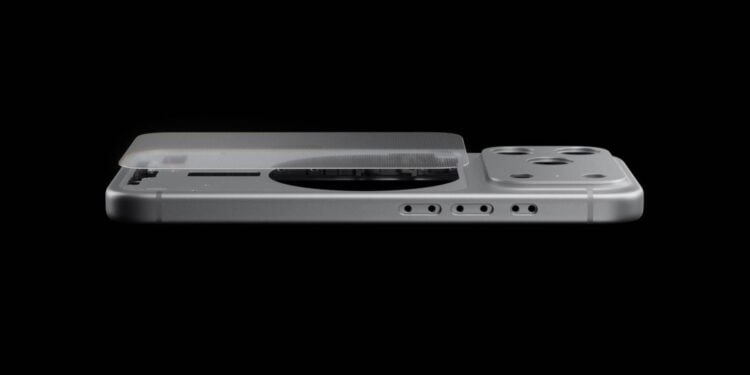Apple is taking an unusual step with the iPhone 17 Pro: The titanium frame introduced with the iPhone 15 Pro is history. Instead, it's back to aluminum. This change may seem like a step backward at first, but it's the result of technical, economic, and environmental considerations.
Titanium has been a key selling point of the Pro models for two generations. It was considered robust, lightweight, and high-quality. At the same time, however, complaints about heat issues increased, while production remained expensive and complex. With the iPhone 17 Pro, Apple is therefore relying on a material that seems familiar but offers decisive advantages: aluminum.
Lighter and cooler in everyday life
The most important reason for the change is heat dissipation. Aluminum conducts heat significantly better than titanium, ensuring the iPhone 17 Pro remains stable even under heavy loads. Combined with the new A19 Pro chip and a redesigned vapor chamber cooling system, the result is a device that's less prone to overheating and more efficient.
Advantages in production
Manufacturing also speaks in favor of aluminum. Titanium frames require special CNC milling, complex tooling, and lead to higher scrap rates. Processing is time-consuming and drives up costs. Aluminum, on the other hand, can be machined faster and easier, which increases production speed and facilitates series production.
sustainability in focus
Another reason for the decision is Apple's environmental strategy. Aluminum has a lower carbon footprint, especially when it comes from low-carbon smelting. Apple leverages partnerships to pursue precisely this path, while also relying on an established recycling system. Titanium, on the other hand, is more energy-intensive to produce and harder to use sustainably in large quantities.
More freedom in design
Aluminum also opens up new color possibilities. The iPhone 17 Pro is offered in a new dark blue and a striking orange. Such bold hues were difficult to achieve with titanium, as the material imposes limitations when it comes to anodizing. With aluminum, Apple is able to visually differentiate the Pro series more clearly.
Titan stays with the iPhone Air
Although the iPhone 17 Pro reverts to aluminum, titanium isn't completely gone. With the new iPhone Air, Apple is launching an ultra-thin model that measures just 5.6 millimeters. To ensure stability despite this thinness, titanium is still used. For the Air series, the material is a necessary element, while the Pro models focus on other components.
Why Apple uses aluminum for the iPhone 17 Pro
The iPhone 17 Pro demonstrates that the choice of materials isn't random, but part of a clear strategy. Aluminum offers cooling advantages, simplifies production, improves the environmental footprint, and opens up new design possibilities. While titanium remains part of the iPhone family, it is reserved for the ultra-thin iPhone Air. For the Pro models, the switch to aluminum represents a thoughtful evolution that combines technology, efficiency, and sustainability. The best products for you: Our Amazon Storefront offers a wide selection of accessories, including those for HomeKit. (Image: Apple)
- iPhone 17: N1 chip, more RAM and battery life at a glance
- High blood pressure warnings coming to older Apple Watch models
- AirPods Pro 2 and AirPods 4 get live translation feature
- MagSafe battery exclusively for iPhone Air – iPhone 17 runs out of power
- New iPhone accessories 2025: cases, bumpers and crossbody
- Final Cut Camera 2.0: All new features at a glance
- iPhone Air battery life: Comparison with iPhone 17 and predecessors
- iPhone 17: There is no longer a SIM slot in these countries
- Apple Watch Series 11: All new features at a glance
- iPhone 17 Pro: New design, A19 Pro chip and 8x zoom
- iPhone Air: The thinnest iPhone with all-day battery life
- iPhone 17 with Center Stage camera and A19 chip introduced
- Apple Watch SE 3 unveiled: Price, features, and availability
- Apple Watch Ultra 3: Innovation meets sustainability
- AirPods Pro 3: Apple's new top model for wireless audio





